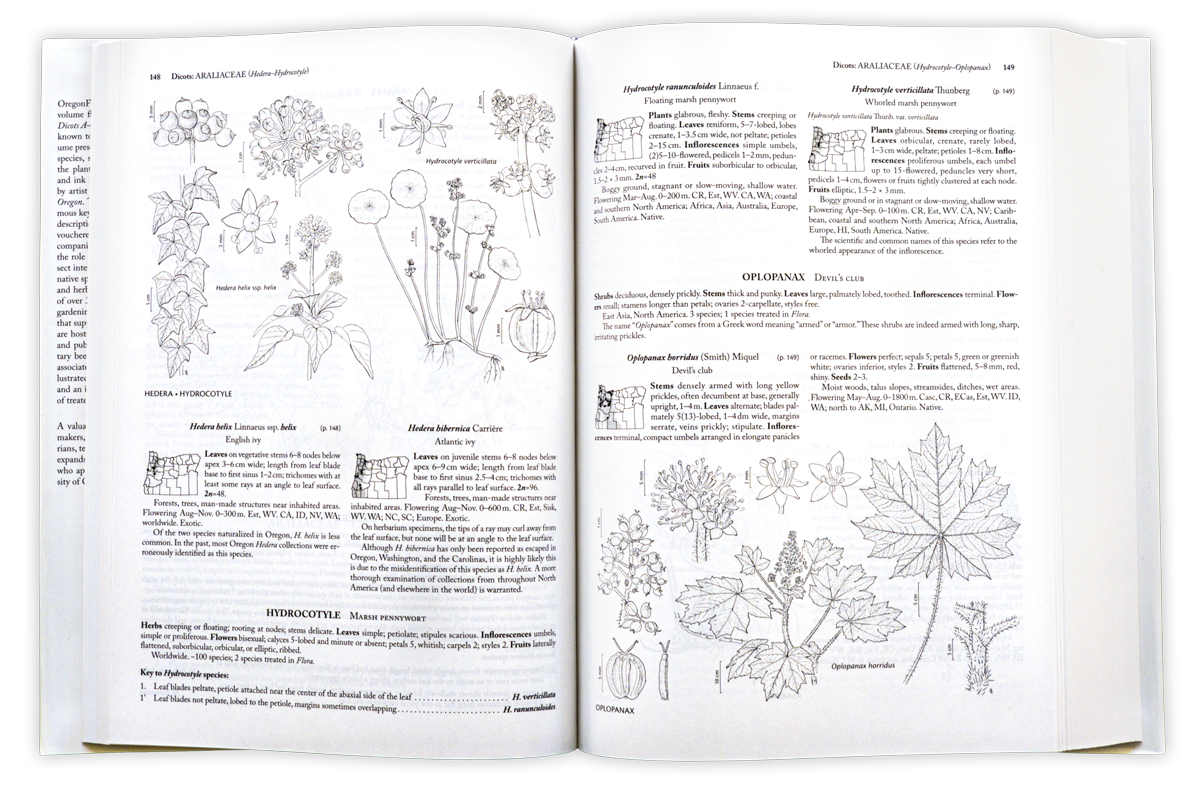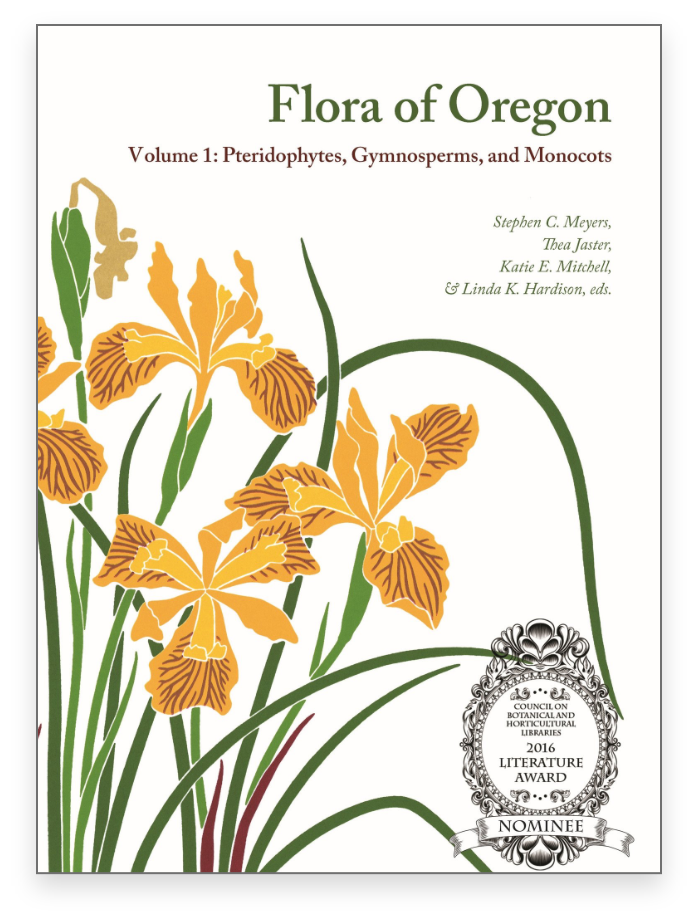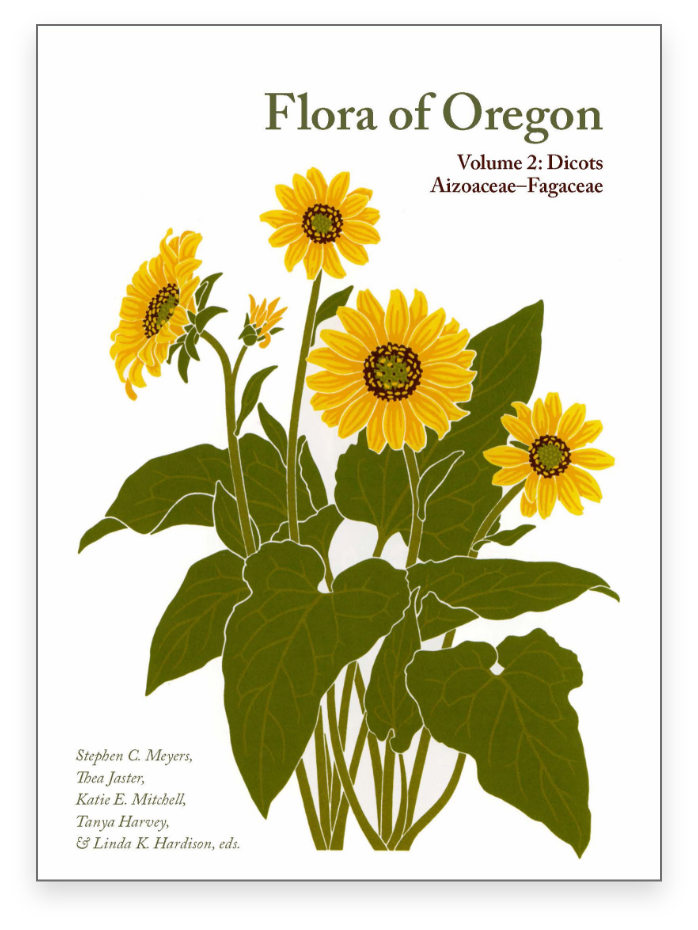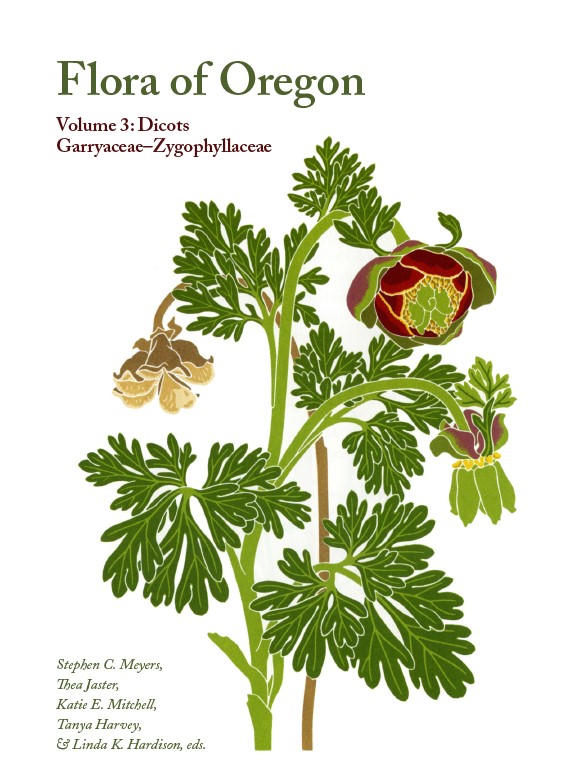The Flora of Oregon is a three-volume reference that will be the state’s only flora published in the past half century and the first illustrated floristic work that exclusively addresses Oregon. Volumes 1 and 2 were published in 2015 and 2020, respectively, and can be purchased directly from the publisher, the Botanical Research Institute of Texas Press, or from other vendors. Volume 3 has a projected publication date of 2025. Upon completion, we estimate detailed descriptions of 4,380 native and naturalized taxa will be published in the three volumes.
Each volume is a beautifully illustrated regional flora that informs plant identification. Included are chapters and appendices providing essential context in topics such as ecology, habitats, gardening with natives, and insect-plant relationships.


Notable families in Volume 1 include all ferns and fern allies, conifers, sedges (Cyperaceae), grasses (Poaceae), orchids (Orchidaceae), and lilies. Front chapters are richly illustrated with color photographs; they describe the state’s ecology and predominant plant habitats, 50 of the best places to see wildflowers, and biographical sketches of notable Oregon botanists. Appendices detail taxa restricted to a single ecoregion, endemics, and those not collected in more than 50 years.

Notable families in Volume 2 include the sunflowers (Asteraceae), mustards (Brassicaceae), heaths (Ericaceae), and legumes (Fabaceae). Filled with photographs, the front chapters cover gardening with native plants and plant-insect interactions with a focus on butterflies and pollinators. Appendices list butterfly-foodplant pairs, pollinator specialists and their targeted plants, native garden plants that support insects, and features of native species used for gardening and landscaping.

Become a part of this lasting legacy - help us complete the series by sponsoring a treatment or illustration for Volume 3 – Dicots: Garryaceae - Zygophyllaceae!
Get started by simply downloading our Oregon Flora Volume 3 sponsorship form:
There is now a new standard of excellence for a state flora.Neil Harriman, Plant Science Bulletin 61(4)
These two well-bound, attractive, and user-friendly publications contain an immense amount of valuable floristic and conservation information that is applicable far beyond their home state.Jenifer Penny & Daniel Brunton
From start (fascinating introductory materials) to finish (information-rich appendices) and everything in between (inspired treatments), this is a winner.Jenifer Penny & Daniel Brunton
We can only hope Volume 3 is not far off so Flora of Oregon can assume its position as the new standard of excellence for the production of regional North American floras.Jenifer Penny & Daniel Brunton,
Page layouts for species treatments strikes a good visual balance between illustrations, maps and text. I was struck by how usable this format is, compared to many older floras.Kathleen Sayce, Douglasia 45(3)
Contemporary, authoritative, comprehensive, well-illustrated, beautifully laid-out, and easy-to-use.David Giblin, Native Plant Society of Oregon 2015 Book Review